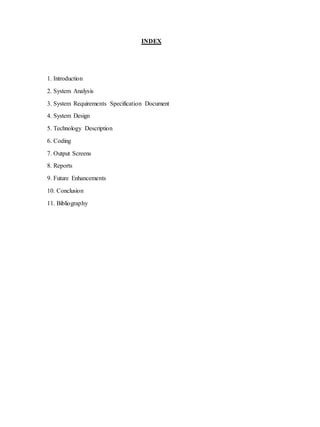The document outlines a project to develop a website aimed at helping farmers in Indian villages sell their products online. It highlights the shortcomings of existing systems in providing guidance and training for computer usage among farmers, and proposes a new system that includes authorized logins, training classes, and multi-language support for users. The document also details technical specifications, including software and hardware requirements, and discusses various technologies such as HTML, JavaScript, and Java, crucial for the development of the e-farming platform.









































